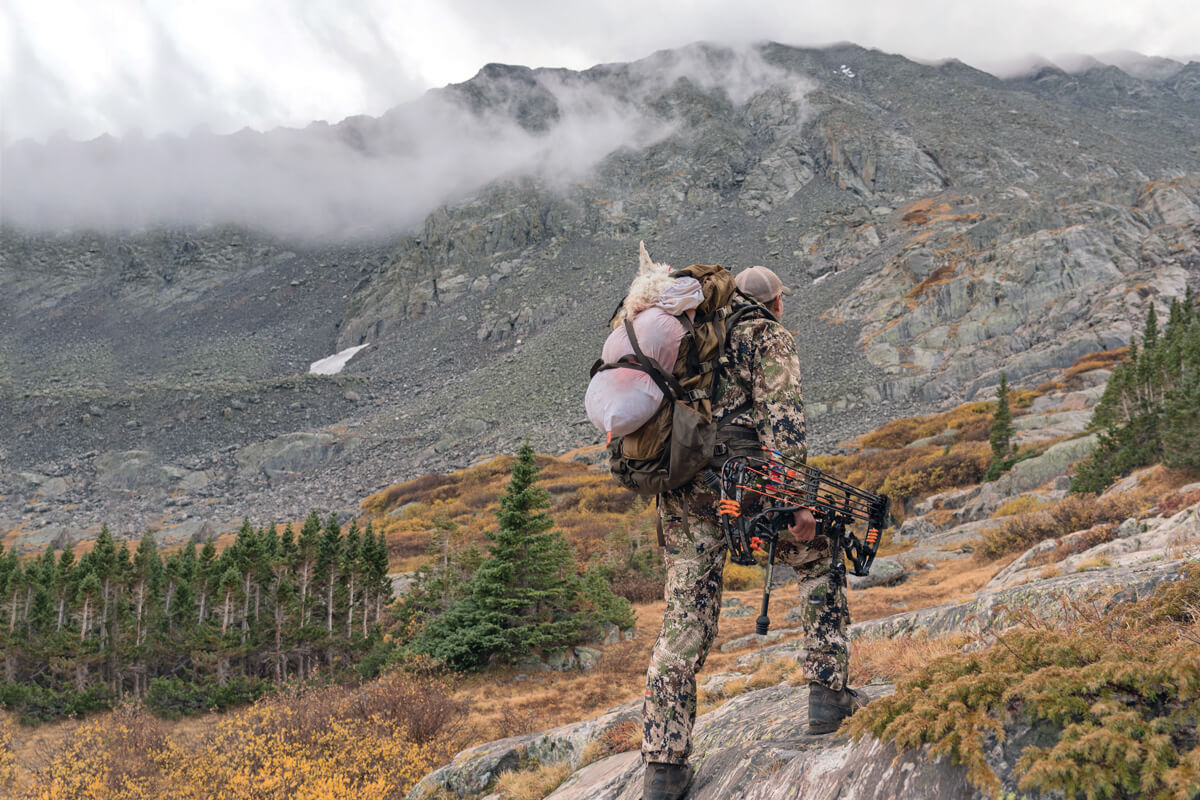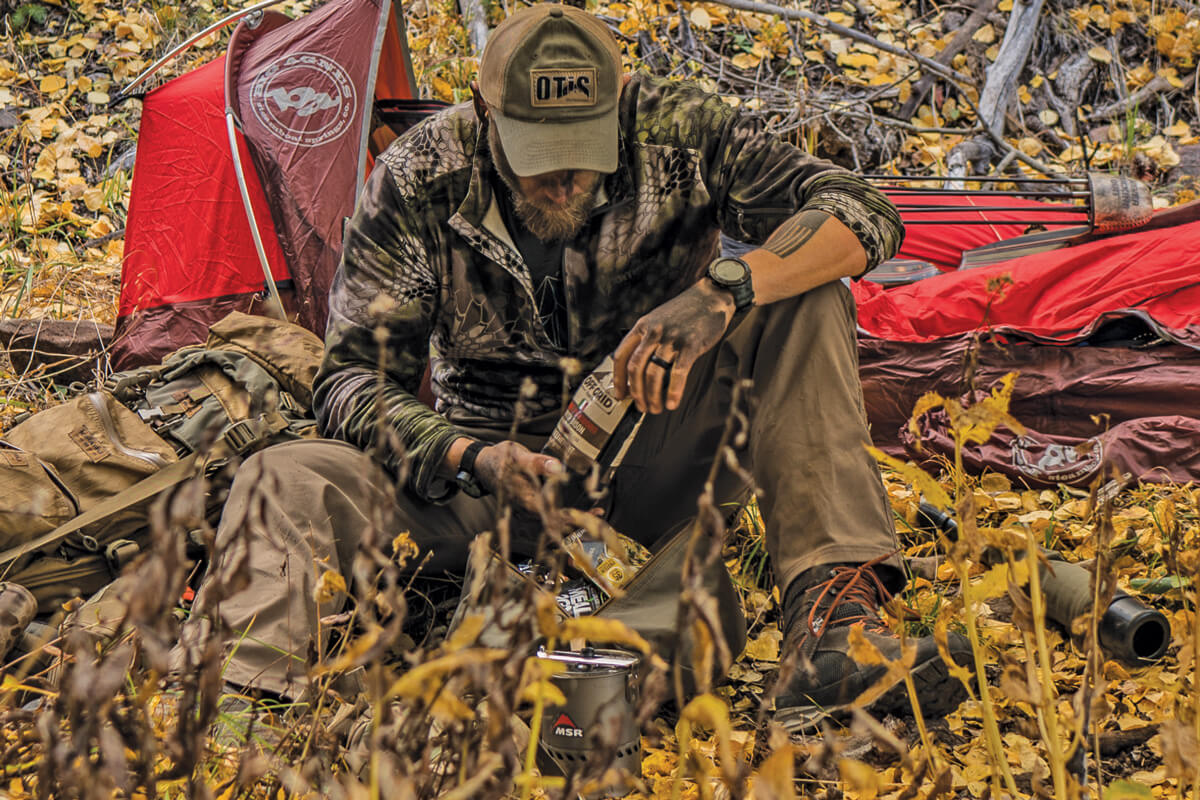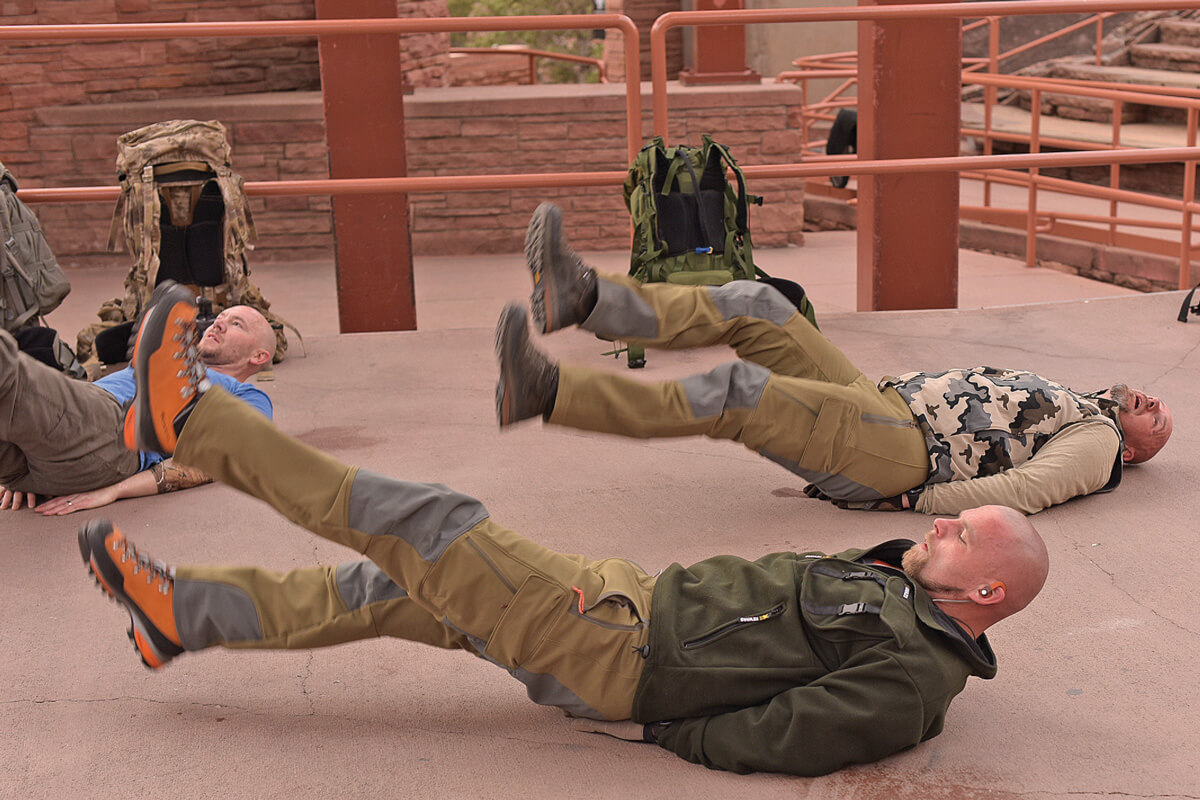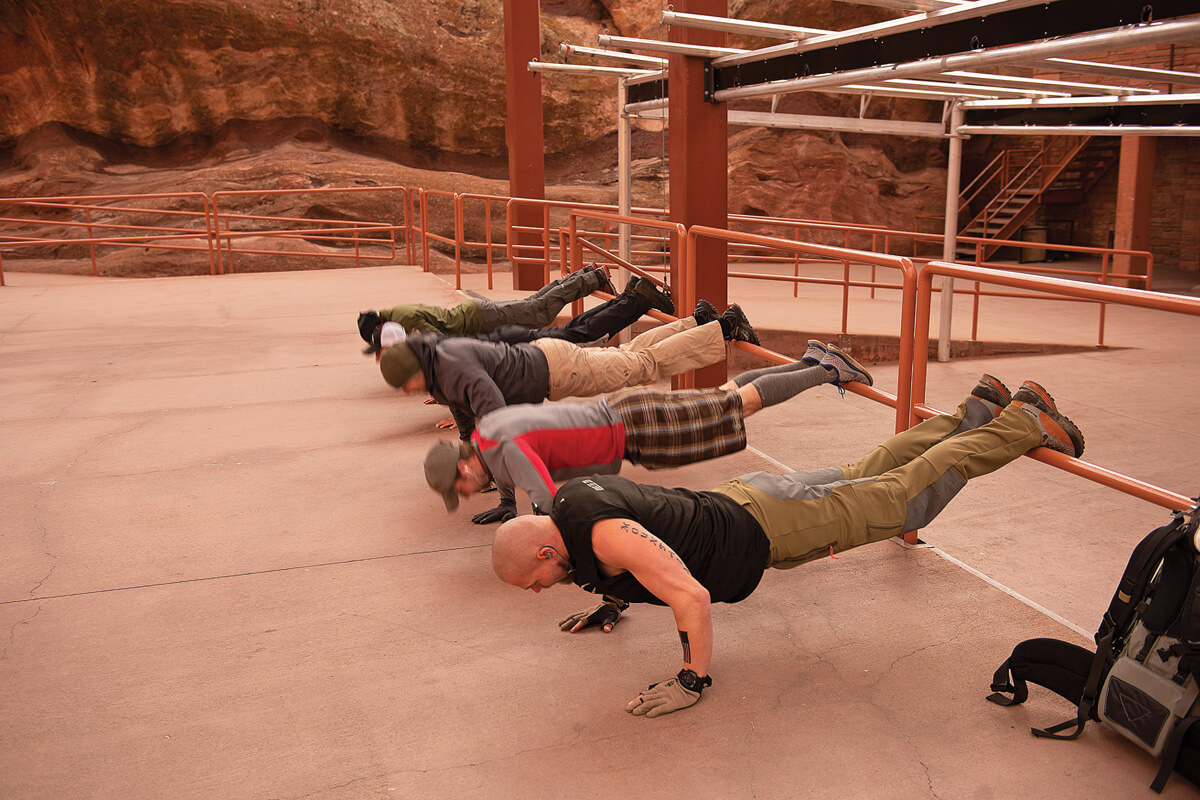Hunter Health: Tips to Stay in the Game


(Author photos)
March 02, 2023
I don’t feel old on most days, but I’m definitely starting to feel things that I didn’t feel a few years ago. Things like a grouchy knee, IT band issues, sore muscles, tendonitis, and a few other ailments that let me know I’ve a got a few years under my belt. I’m certainly not ready to throw in the towel, but I’ve started coming to terms with the fact that I probably have more years behind me (I’m 45) than I have ahead of me…at least when it comes to the rough-and-tumble world of backpack hunting the wilderness and the grind of extreme mountain hunts. I bring this up because I’m currently at a hunting camp, guiding mule deer hunters, and there was a discussion last night at the dinner table about fitness, health, and the longevity one might have when referring to strenuous hunts and how you might extend those years.
I’m sure some of you reading this are saying, “I’m 65 and still getting after it…you’re still a pup,” and I wouldn’t disagree. What I would say is that, at times anyway, I should have listened to the older crowd when I was about to do something physically stupid in my younger days. And even though I know better, I’m still abusing my body and making poor choices today. So why is that? Some of it might be bravado or ego, the internal struggle to prove to myself I can still run with my younger self — and maybe, just maybe, because I can still do it. The why doesn’t really matter, but what does matter is that I don’t injure myself while doing said stupid tasks. I want to stay in the mountains/wilderness as long as I can, and at this point I’m still running strong.
So, with the thought-provoking conversation last night, I thought I would cover the good, the bad, and the ugly of what I’ve done to my body and what I’ve done to stay relatively healthy and injury free, and how I’ve altered my diet and workout program over time.
Diet
As boring a subject as it may be, dieting is probably the most important and most overlooked ingredient to a long lifespan in the field, as well as your day-to-day life. More than once I’ve told people that they should probably lose 40 pounds off their butt instead of worrying about dropping four ounces in pack weight. I speak from experience on this one! When it comes to gear, if you have money, it is easily attained without hard work or discipline. Dieting and nutrition demand a lot of discipline, hard work, and determination. Diet is 65 to 70 percent of the battle. In other words, YOU CAN’T WORK OUT.
Enough To Outweigh A Bad Diet!
Every body type is going to be a little different, and that means everyone’s diet will be different. However, cutting out processed carbs/sugars, gluten, and drinking 100 ounces (or more) of water a day is probably a safe path to a better and healthier life. This means giving up soda, cookies, crackers, chips, and all the other good stuff we love to eat. This will help you lose weight but will also help with inflammation, gut health, and multiple other physical ailments. You can find a lot of good information and some unbelievable health and fitness coaches in the outdoor industry on the Internet. Get to know their programs and philosophies and see if they match your needs and personality. My diet plan, much like my workout plan, is pretty boring: High protein, high fat, some carbs (the good ones), and keeping away from processed carbs. I pretty much live off wild game, and my wife cooks all organic, so that’s a big help, too.

Another potential downfall I’ve found for myself is overeating and binge eating. I’m a recovering fat kid, and having something sweet in the house is the same as having alcohol in an alcoholic’s home. For whatever reason, I have the discipline to keep junk food out of the house, but lack the discipline to not eat it when it’s in the house. SO, KEEP IT OUT OF THE HOUSE!
Finding healthy substitute food has been another lifesaver for me. Find something to snack on to keep cravings down that isn’t too bad for you like jerky, raw almonds, cheese sticks, fruit (some fruit anyway), and the occasional somewhat healthy protein bar.
One thing about a good diet plan is that eating healthy food will eventually become second nature and not a chore, as it will be in the beginning. You will also feel about 100 times better, and that will hopefully carry you through the rough times.
Exercise
Much like dieting, exercising every day will eventually become second nature, and in a lot of cases, an addiction. The problem is that there are so many exercise programs, fitness coaches, and marketing hype, that it gets confusing. Every person is going to have different goals, body types and builds, so a workout program specific to YOU is your best bet. This isn’t a must but is definitely something that you will eventually want to do.
Video That May Interest You
In my case, I’ve gone from the far ends of each spectrum on workout and fitness programs from a 275-pound powerlifter to a 190-pound backpack hunter/hiker. In the end, I have landed somewhere in the middle, with my focus more on mountain hunting and endurance than overall strength and an average body weight of 210–215 pounds. That weight keeps me around 11 to 12 percent body fat and allows for decent speed and endurance on the mountain, but also keeps a decent amount of muscle mass on me and a little extra fat when needed.

The workout program I’ve stuck with to maintain this “condition” is pretty boring, but it works for me. I do have a home gym, but I can do a modified version in any hunting camp or hotel. I focus on push-ups, air squats, abs, and lunges, and I use resistance bands for my arms/shoulders and back. I don’t lift overly heavy weights and focus on supersets (going from one exercise to another with moderate rest) and keeping my heart rate at the higher end of fat burning. I also do a lot of backpack cardio and mountain biking, and when the weather stinks, I live on the rower and Hitmill X to keep the cardio going.
As far as the reps/weight go, here’s a few examples of a normal superset routine:
- Air Squats: 30 squats x 4
- Push-Ups: 30 push-ups x 30
- Curls: 35/40 lbs. x 4 reps x 12
- Crunches: 50 crunches x 4
- Overhead triceps extensions: 45/50 lbs. x 15 reps x 4
This obviously isn’t the only workout I do, or the only muscle groups I focus on, but something like this will kick my butt in short order — and I can do these exercises anywhere I want to.
This is what works for me, but if you’re confused in the beginning, then get a good trainer (in person or virtual) to help get you on the right path. A qualified trainer will also help you work around your current physical ailments/injuries to keep you going while also preventing future problems.

For example, Matt Chan (a CrossFit trainer) sat down with me in my office several months ago and basically told me backpack cardio wasn’t something I needed anymore. He went on to explain that I had been doing it for so long that my body had adapted to it and I needed to change things up a bit as a result.
Mountain-biking was one of Matt’s suggestions, because it’s low-impact and would help save whatever I had left in my knees. So, I purchased a bike from my friends over at Yeti, got the necessary gear to get going, and just rode the bike for three months. I was worried I’d get my butt kicked on our first big scouting trip. I was very wrong, and I did better hiking with a heavy load than I had in years!
Don’t be afraid of working out or let it overwhelm you. Baby steps at first, and then go from there. Like dieting, you will ultimately live a happier and healthier life all the way around.
Supplements
The general idea behind supplements is taking something other than food — amino acids, caffeine, Creatine, protein powders, vitamins/minerals, probiotics, herbals, etc. — to help your performance and physical wellness. At one time, I took about every supplement I could to help my performance and muscle growth. But in the end, I realized a good diet was all I truly needed. I’m not saying some supplements don’t work; I’m just saying that as a mountain hunter who doesn’t want to stack on unwanted mass, they weren’t for me. I just want to get to my destination easier and feel as good on Day 10 as I did on Day One.
While I don’t want to go into too much depth on this subject, I do feel the need to address this fact: Since hitting 40, my focus has been on improving my gut health, joints, core strength, and endurance, so my daily supplementation looks much different from what it was when I was 28. Here’s an example of what I mean:
2008
- Test Booster
- Pre-Workout
- Creatine
- Protein Powder — 200 grams/day
- HGH Booster
- BCAA
- Multivitamin
2022
- Fish Oil
- Vitamin C
- Vitamin D
- Probiotics
- Turmeric
- Collagen
- Glucosamine
Any of these supplements can be beneficial, depending on what you’re trying to accomplish. At this point, I’m trying to stay healthy and pain-free, and the supplements I’m taking now have been a huge help.
Water isn’t a supplement; it’s far more important. The human body is made of 60-percent water, and it is alarming how little water most people drink each day. On average, you should be consuming 80-120 ounces of water each day.
Overtraining & Ego
As far as longevity on the mountain goes, overtraining and ego (internal or external) can do some serious damage to the longevity of your outdoor career. This is a heavily debated topic on social media. I see both sides, and I’m as guilty as anyone for overtraining, lifting heavy, packing out entire animals, and telling people to “suck it up” when they start complaining about pack weight or intense workouts. The other side is, I’m starting to feel pain in overused body parts more often than I’d like.

Would this be happening if I’d trained with less weight and frequency in the gym? Would my knees feel better if I hadn’t let my internal ego take over and pack out way more weight than I should have? Or would I be worse off by not hitting the gym and strengthening and conditioning my body? To these questions, I would say that like most things in life, a happy medium is probably the best approach. If you’re “that guy,” crank it up if it helps push you. I’m not saying train with medium weight or medium intensity, but you should definitely let your body heal and only go full-bore when necessary.
I hope I’m making some sense, as I don’t want to be taken out of context, so if the time comes that packing out the entire animal is easier than dragging it, then get to packing. On the same subject, frequently training with 100-pound pack weights is a bad idea. I’m not saying you shouldn’t test the waters and see how you do with that much weight, but you are potentially taking years of life off your knees and back, so it should be done in moderation. At this point, I wouldn’t change anything I’ve done when it comes to training because it has been one hell of a ride, both in the gym, field, or wilderness. The question is, will I have the same outlook in 10 years? I’m guessing if my knees and body are so shot that I can no longer hunt, I will be saying something totally different.
So, get your butt in the gym and train like a madman! You want to be strong, fit, and ready, but stay reserved until the time comes when you really have to get after it.
Preventive Maintenance/Stretching
Like most people I’ve talked to in my age bracket, I’m horrible about stretching and preventative maintenance — at least I was for the first 40 years of my life. I now own multiple foam rollers, Vudu floss and massage guns, and I see a massage therapist and dry needle specialist frequently. I’m not sure how much any of this would have helped when I was younger, but the aforementioned have mostly been a lifesaver for me in recent years. Stretching and maintenance isn’t always what I’d call “fun,” but speaking from personal experience, I will say it’s worth adding to your daily routine…and stick with it if it works for you like it has for me.
You can search out a lot of info about the items I’ve listed, specific stretches for specific issues, and which exercises to do for combating current problems. I don’t want to go into too much detail with this as I’m not remotely qualified, but I would suggest, especially as you get older, finding someone who is, and they will most certainly help you out in many ways.
Summary
As I type this article, I’m sitting at a table in West Texas with aoudad and mule deer hunters I’ve been guiding. My knees hurt — especially my right one — my back is a little stiff, and both my shoulders are popping a little. I still do my morning workout each day and go as hard as I can on the mountain, but it wouldn’t hurt my feelings to have a little less pain at times.
All the physical issues are daily reminders that I’ve been very blessed to experience some incredible adventures with amazing people. I try to keep that in mind when my body aches a little.
The author is a survival and backcountry hunting expert who just moved his company, Kifaru International, to Wyoming.







